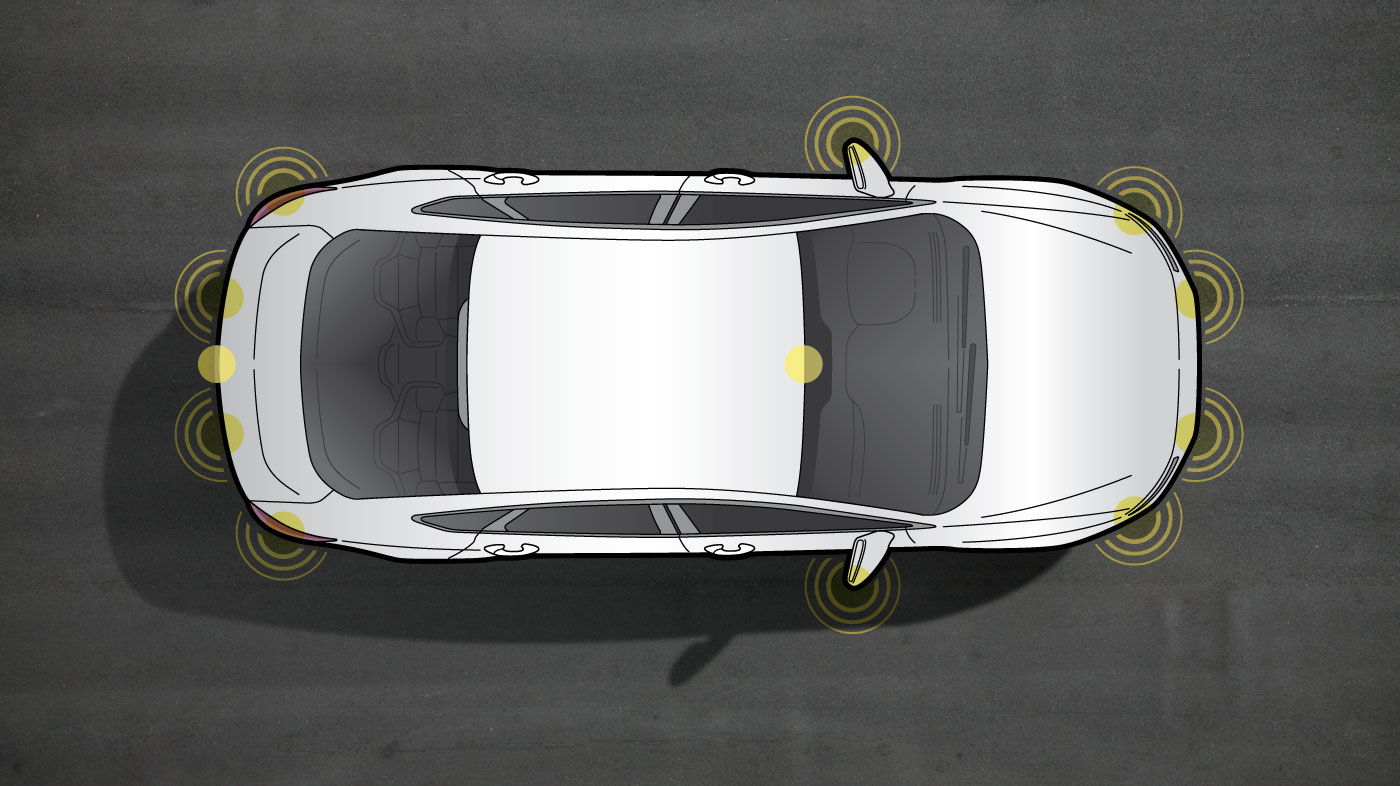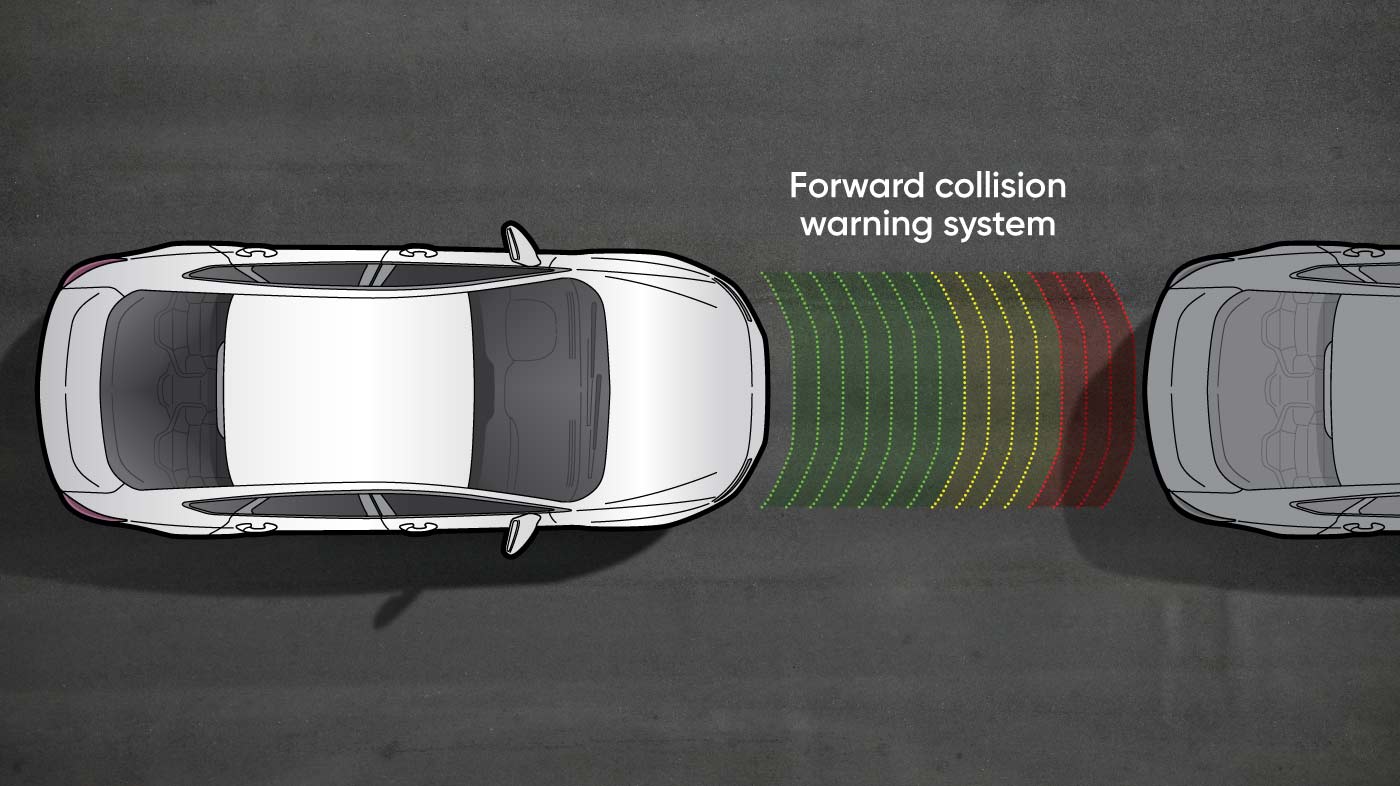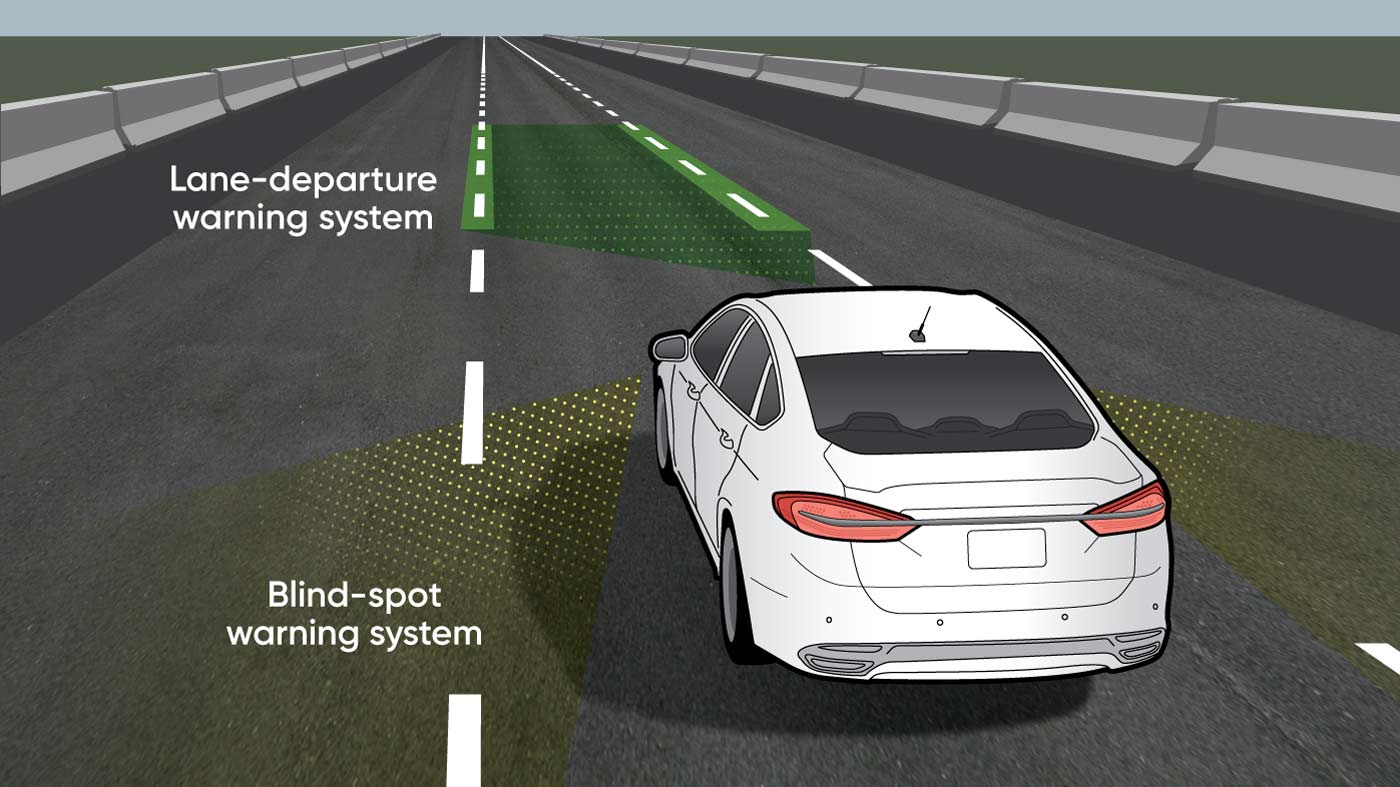Bumper to Bumper: How Crash Avoidance Technology Works
Get up to speed on the latest in automotive safety.

It’s hard to believe there was a time when seat belts didn’t come standard. Someday the same will be said of collision-prevention technology as it becomes more common and laws increasingly require it.
So when you buy your next car, you’ll want to be prepared. Here is how crash-avoidance technology works and common terms you might come across.
Collision-prevention technology basics
Each auto maker uses different technologies, but collision-prevention systems use two common types of sensors—ultrasonic and electromagnetic—that are sometimes paired with automatic emergency braking.
Ultrasonic sensors
Like bats or dolphins, these sensors use echolocation to avoid collisions: They emit an inaudible sound wave, which reflects off an object and returns. When it’s back, the sensor can determine the distance between the object and the vehicle. Drivers are typically alerted to close objects by a visual, audible or vibration alert.
These sensors:
- Are mounted in your vehicle’s front and rear bumper
- Require a clear line of sight—making a clean bumper necessary
- Have difficulty judging distance from inclined, reflective or plastic surfaces
- Have difficulty judging distance from small or narrow objects, people and foliage
- Don’t work with a tow bar
Electromagnetic sensors
These sensors create an electromagnetic field to determine the distance between your vehicle and an object. As you near the object the field is disrupted or the voltage of the field changes, which causes a visual, audible or vibration alert for the driver.
These sensors:
- Are mounted in your vehicle’s front and rear bumper
- Typically detect objects only when your vehicle is moving
- Are better than ultrasonic sensors at detecting moving objects
- Work with a tow bar or bicycle rack
Automatic emergency braking
As the name implies, automatic emergency braking (AEB) applies the brakes to slow or stop your car when your system’s sensors determine that you are at risk for a crash and failing to take action. AEB is designed to prevent a collision or reduce speed ahead of a collision.
Twenty automakers in the United States have agreed to make AEB a standard feature by 2022 on all models except heavy-duty pickup trucks. Studies have shown that rear-end crashes for models equipped with AEB dropped by 50 percent, according to the Insurance Institute for Highway Safety (IIHS).
Front-collision prevention


Collision preparation, pre-sense, crash mitigation, forward-collision warning—all of these terms from vehicle manufacturers refer to front-crash prevention systems. Regardless of the name, all have a similar purpose: to alert you of obstacles in front of your vehicle.
Forward-collision warning
These sensors on the front of your car detect the distance between your vehicle and the one in front of you. A forward-collision warning system issues a notification such as a sound, vibration or visual warning (or a combination of the three) on your dash or windshield.
Front cross-traffic alert
Cross-traffic alerts notify drivers of vehicles approaching from the side at an intersection or around blind corners. It may also be a camera-based feature that requires activation (through a button) to view cross traffic on a screen.
Side-crash prevention


Side-crash prevention systems alert you to potential vehicles or obstacles to the side of your vehicle, and they notify you if you are drifting out of your lane. As with front-crash prevention systems, each auto manufacturer labels these systems differently and includes different features.
Blind-spot warning
A blind-spot warning system notifies you when it’s unsafe to merge or change lanes. Some systems may alert you if you use your turn signal while a vehicle is next to you.
Lane-departure warning
A lane-departure warning system uses cameras to track the lines on the road and alert you when you drift, helping to prevent a crash. This technology does not work if road lines are faded or absent. If you use your turn signal, it will overrule the lane-departure warning system. Some crash-prevention systems may have lane-keeping assistance that brakes or takes control of the steering to prevent your vehicle from leaving the lane.
Rear-crash prevention


Like front-crash prevention systems, rear-crash prevention systems go by different names (rear cross-path detection, cross-traffic alert, moving-object detection) and have different features, based on the vehicle manufacturer.
Rear-collision warning
These systems alert you when a vehicle or other object is behind or approaching the rear of your vehicle (including cross traffic) while you are backing up. Some rear-collision warning systems will even alert you when a vehicle is about to rear-end you while you are driving forward.
Backup camera
Backup cameras show your surroundings—typically blind spots such as directly behind your vehicle and to the left and right, which are often hard to see when looking in your mirrors or over your shoulder. As of May 2018, the National Highway Traffic Safety Administration requires all new vehicles to have a backup camera.